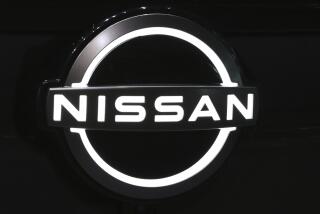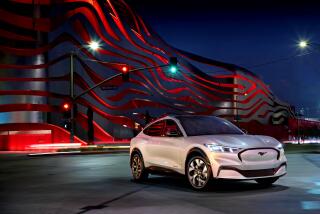Nissan marches us toward driverless future
Technophobes beware, self-driving cars are getting closer every day.
Luxury cars like Audi’s A8 already have cruise control systems that can take you down to a dead stop and back to cruising speed without any human interaction. Google’s self-drivers are ubiquitous in the San Francisco area, and a variety of Fords and Lincolns can parallel park themselves.
And now Nissan is getting into the mix.
The company recently launched a pair of technologies related to cars moving themselves when humans can’t or won’t.
The first is a system that will automatically steer the car away from another vehicle or a pedestrian crossing into its path if it detects the driver’s failure to do so. The car uses sensors not only to see the incoming object, but also to make sure the lane your car will swerve into is clear.
Such a system might be particularly useful in cities like Los Angeles and New York, which were recently determined to have significantly higher fatality rates for pedestrians and cyclists than the national average.
Unfortunately, Nissan says this system is still in the “testing and refinement stage,” so don’t expect to see it in a Nissan or Infiniti product in the immediate future.
But one component of this system will arrive in select Infiniti’s in about a year, and though it may not affect pedestrian fatality rates, Nissan hopes it will improve the driving experience.
To give the autonomous steering system complete and immediate control of the car’s steering, the mechanical linkage between the steering wheel itself and the front wheels needed to be removed and replaced with an all-electric system.
This setup reads your inputs via the steering wheel and transmits them to the front wheels electronically, thus making the steering more immediate to your commands. Essentially, the only connection between your hands and the front wheels are wires and computers (don’t worry, Nissan says the system has plenty of redundancies built in).
A nice side effect of such a setup is that if you were to plow through L.A.’s many rough, pothole-laden roads, you would feel none of the impact that might jerk the steering wheel in your hands. The front wheels would still move, but the electronics wouldn’t pass that impact to you.
But Nissan didn’t stop there. The company added to this electronic steering a camera-based nanny that watches the road you’re on and will use the electronic steering system to make tiny corrections to keep you in your lane and driving in your intended path. Nissan claims this will reduce driver fatigue as you won’t have to make countless tiny corrections during highway cruising.
So, fearful luddites, rest easy. Though we’re marching toward an automotive future that chooses RAM over brain cells, it’s all in the name of safety.
ALSO:
Self-driving cars are approaching fast -- and safely
L.A. drivers have a high rate of fatal pedestrian, cyclist crashes
4-year-old uncovers Lexus trunk latch defect
More to Read
Inside the business of entertainment
The Wide Shot brings you news, analysis and insights on everything from streaming wars to production — and what it all means for the future.
You may occasionally receive promotional content from the Los Angeles Times.











